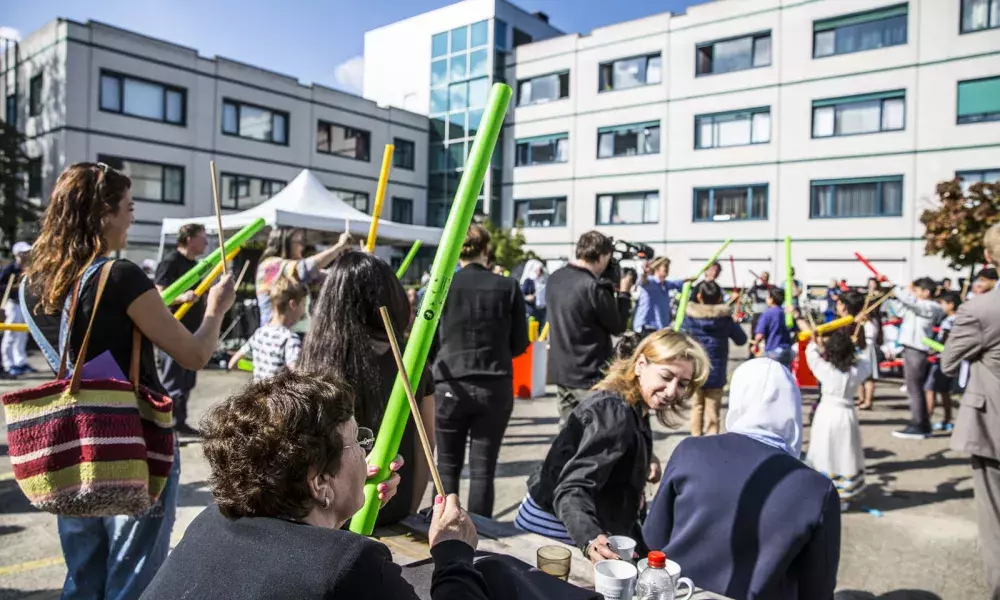
Integrated territorial approach: one of the EU’s main objectives
The New Leipzig Charter, adopted in 2020, underlines the need to better coordinate urban development at spatial, sectoral and temporal levels. This integrated territorial approach relies on the “simultaneous and fair consideration of all concerns and interests relevant to urban development”. In the same vain, the EU has put an emphasis on integrated territorial development through the regulation of the Cohesion Policy in adopting policy objective 5, “Europe closer to citizens by fostering the sustainable and integrated development of all types of territories”.

What is integrated territorial development?
Integrated territorial development (ITD) proposes a different way of shaping solutions to territorial challenges regardless of administrative boundaries. The concept of ITD is widely recognised and has been at the core of EU urban policies for several decades. The New Leipzig Charter has proposed 4 key principles that are commonly used as good urban working principles:
- Place-based approach: focusing urban strategies at a coherent scale, beyond administrative boundaries, in order to foster endogenous urban transformation and reduce socioeconomic inequalities.
- Integrated approach (multi-sectoral): coordinating all areas of urban policy in particular the environmental, social and economic dimensions. It aims to overcome the political silos that do not take into account co-dependencies or interdependencies with other sectors.
- Participation and co-creation: involving all urban actors to strengthen local democracy and letting citizens having a say in processes that affect their daily lives. It includes new forms of co-creation and co-design practices that can help cities in managing conflicts, share responsibilities, find innovative solutions.
- Multi-level governance: tackling challenges jointly across all levels of urban and spatial policy. It requires the cooperation of all societal actors, including the civil society and the private sector. Vertical and horizontal multi-level and multi-stakeholder cooperation, both bottom-up and top-down, are key to good urban governance.
These working principles translate into a methodological approach and lead cities and territories to adopt new ways of designing urban policies. In particular, these principles help incorporate the complexity of conflicting objectives and interlinked challenges.
Although the principles of integrated territorial development are not new, cities still face difficulties in effectively implementing ITD.
UIA cities translate integrated development into practice
Since the approval of the first projects back in 2015, cities have been testing and experiencing regularly what it means to apply the main methodological principles for integrated territorial development. Most importantly, they shed light on the challenges that this unfolds and the pragmatic solutions they find.
By studying the different projects funded by UIA, we aim to propose tangible good practices of integrated territorial development, such as:
- Ways to choose the most appropriate territorial scale in which a project should operate
- New governance models, that guarantee meaningful citizens involvement
- Delivery mechanisms for projects tackling 2 sectoral objectives, for example: mobility and employment.
The integrated territorial development study
During this 12-month knowledge activity, we will be working together with AIEDL, Eutropian and UIA cities.
The key questions of the study are the following:
- To what extent has the delivery of UIA projects taken into consideration the aforementioned principles?
- What is the urban authorities’ experience in implementing an ITD project?
- Has such an approach led to effective practices of innovation and how has this impacted the expected results?
UIA is also working in partnership with URBACT, the Joint Research Centre of the European Commission, the European Committee of the Regions and the European Commission - DG REGIO on this activity, to discuss the findings and align with existing work on the matter.
What’s next?
The activity includes a desk review of projects, followed by 360-degree hearings of a selection of projects. Stay tuned for upcoming events where you can be sure to get your hands on our findings, a repository of good practices and a final report of UIA’s knowledge activity on integrated territorial approach!
About this resource
The Urban Innovative Actions (UIA) is a European Union initiative that provided funding to urban areas across Europe to test new and unproven solutions to urban challenges. The initiative had a total ERDF budget of €372 million for 2014-2020.
Similar content




